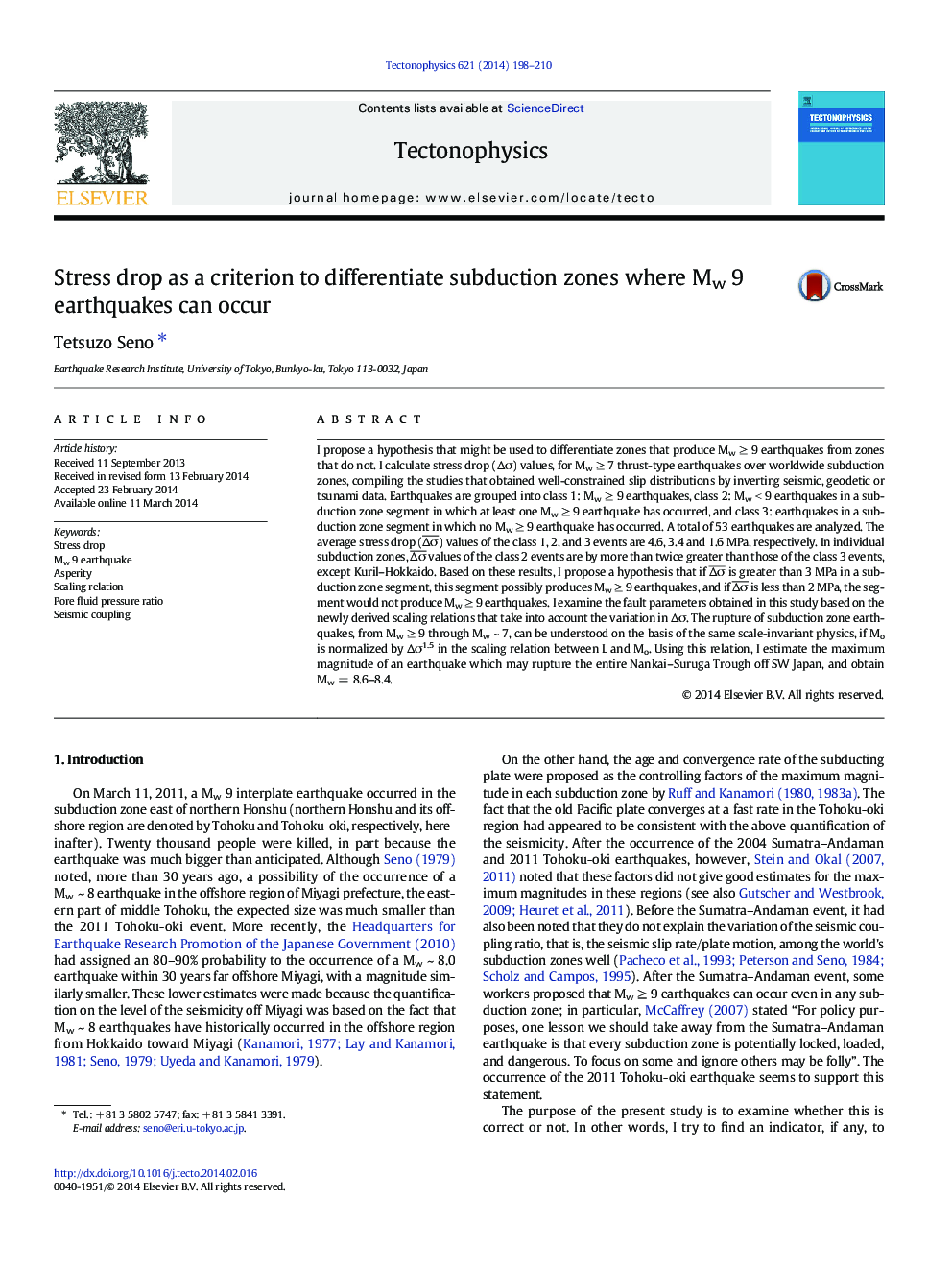| کد مقاله | کد نشریه | سال انتشار | مقاله انگلیسی | نسخه تمام متن |
|---|---|---|---|---|
| 6433873 | 1636769 | 2014 | 13 صفحه PDF | دانلود رایگان |

- I try to find an indicator to differentiate the subduction zones where Mw
- 9 earthquakes occur. Stress drops in Mw
- 9 zones are significantly high. I derive the scaling relations, which take into account the variation of ïï³. It is derived that Mo should be normalized by ïï³1.5 in the scaling relation between L and Mo. The mode of earthquake rupture is discussed in terms of the asperity areas in the fault area.
I propose a hypothesis that might be used to differentiate zones that produce Mw â¥Â 9 earthquakes from zones that do not. I calculate stress drop (ÎÏ) values, for Mw â¥Â 7 thrust-type earthquakes over worldwide subduction zones, compiling the studies that obtained well-constrained slip distributions by inverting seismic, geodetic or tsunami data. Earthquakes are grouped into class 1: Mw â¥Â 9 earthquakes, class 2: Mw < 9 earthquakes in a subduction zone segment in which at least one Mw â¥Â 9 earthquake has occurred, and class 3: earthquakes in a subduction zone segment in which no Mw â¥Â 9 earthquake has occurred. A total of 53 earthquakes are analyzed. The average stress drop (Îϯ) values of the class 1, 2, and 3 events are 4.6, 3.4 and 1.6 MPa, respectively. In individual subduction zones, Îϯ values of the class 2 events are by more than twice greater than those of the class 3 events, except Kuril-Hokkaido. Based on these results, I propose a hypothesis that if Îϯ is greater than 3 MPa in a subduction zone segment, this segment possibly produces Mw â¥Â 9 earthquakes, and if Îϯ is less than 2 MPa, the segment would not produce Mw â¥Â 9 earthquakes. I examine the fault parameters obtained in this study based on the newly derived scaling relations that take into account the variation in ÎÏ. The rupture of subduction zone earthquakes, from Mw â¥Â 9 through Mw ~ 7, can be understood on the basis of the same scale-invariant physics, if Mo is normalized by ÎÏ1.5 in the scaling relation between L and Mo. Using this relation, I estimate the maximum magnitude of an earthquake which may rupture the entire Nankai-Suruga Trough off SW Japan, and obtain Mw = 8.6-8.4.
Journal: Tectonophysics - Volume 621, 7 May 2014, Pages 198-210